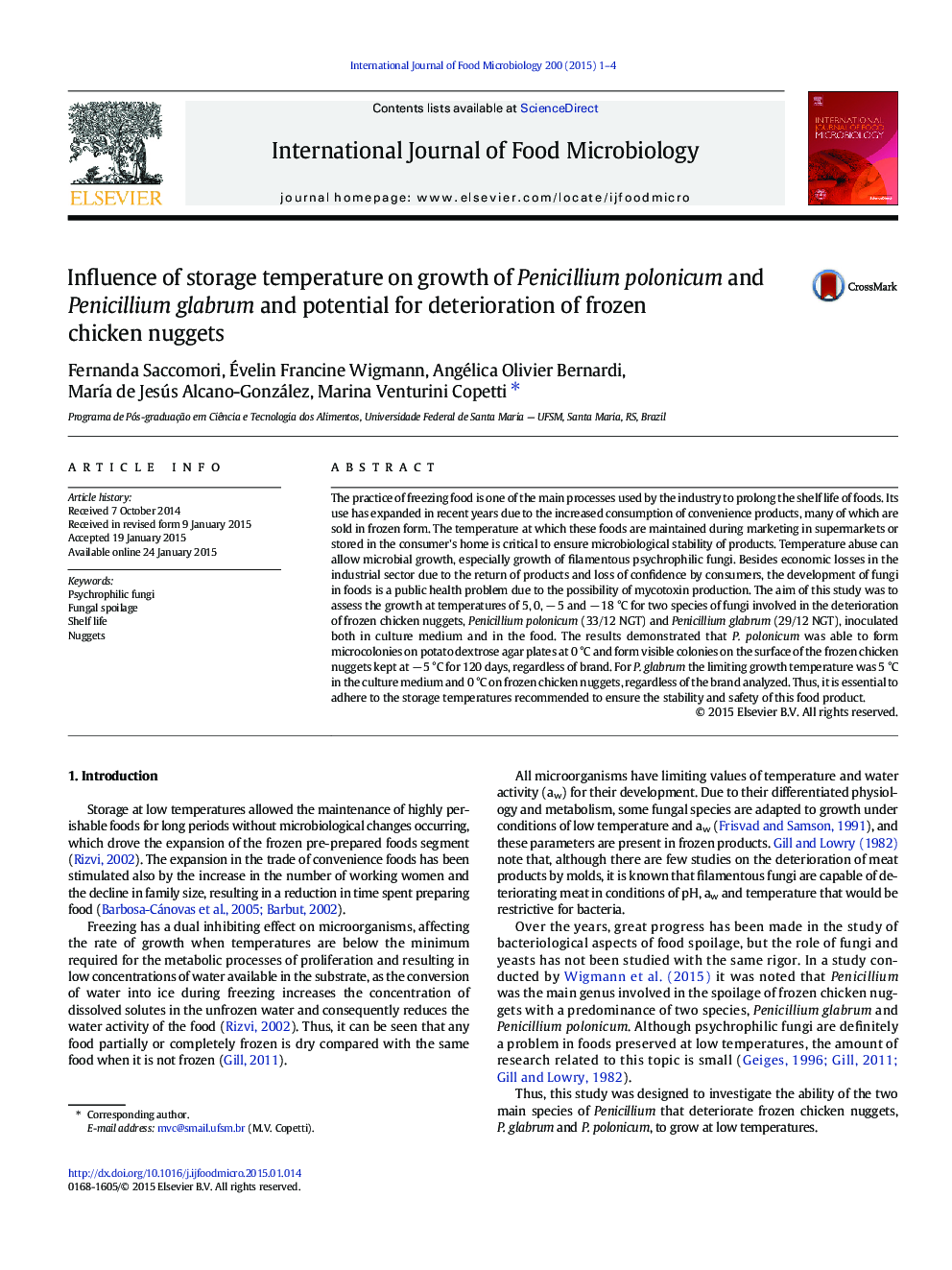| Article ID | Journal | Published Year | Pages | File Type |
|---|---|---|---|---|
| 4366629 | International Journal of Food Microbiology | 2015 | 4 Pages |
Abstract
The practice of freezing food is one of the main processes used by the industry to prolong the shelf life of foods. Its use has expanded in recent years due to the increased consumption of convenience products, many of which are sold in frozen form. The temperature at which these foods are maintained during marketing in supermarkets or stored in the consumer's home is critical to ensure microbiological stability of products. Temperature abuse can allow microbial growth, especially growth of filamentous psychrophilic fungi. Besides economic losses in the industrial sector due to the return of products and loss of confidence by consumers, the development of fungi in foods is a public health problem due to the possibility of mycotoxin production. The aim of this study was to assess the growth at temperatures of 5, 0, â 5 and â 18 °C for two species of fungi involved in the deterioration of frozen chicken nuggets, Penicillium polonicum (33/12 NGT) and Penicillium glabrum (29/12 NGT), inoculated both in culture medium and in the food. The results demonstrated that P. polonicum was able to form microcolonies on potato dextrose agar plates at 0 °C and form visible colonies on the surface of the frozen chicken nuggets kept at â 5 °C for 120 days, regardless of brand. For P. glabrum the limiting growth temperature was 5 °C in the culture medium and 0 °C on frozen chicken nuggets, regardless of the brand analyzed. Thus, it is essential to adhere to the storage temperatures recommended to ensure the stability and safety of this food product.
Keywords
Related Topics
Life Sciences
Agricultural and Biological Sciences
Food Science
Authors
Fernanda Saccomori, Ãvelin Francine Wigmann, Angélica Olivier Bernardi, MarÃa de Jesús Alcano-González, Marina Venturini Copetti,
